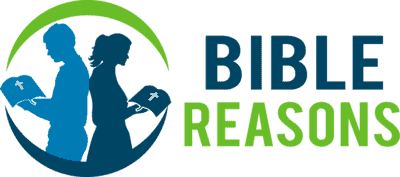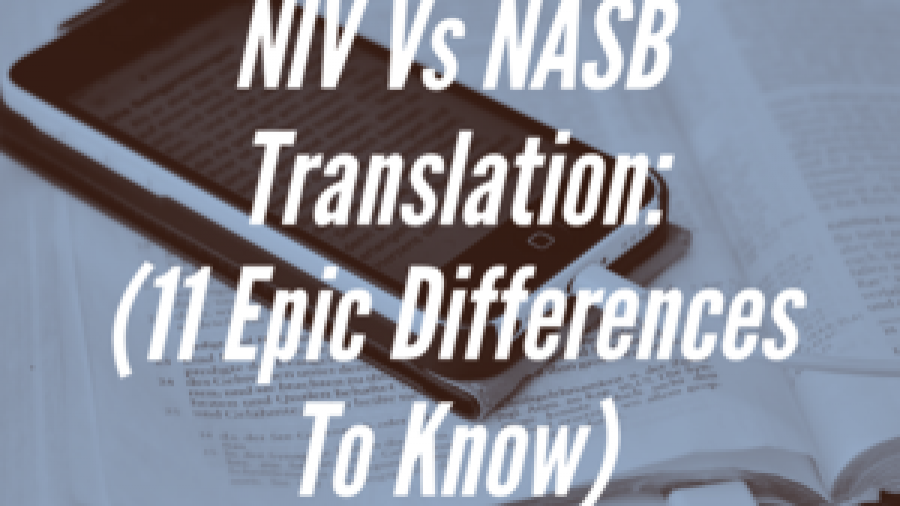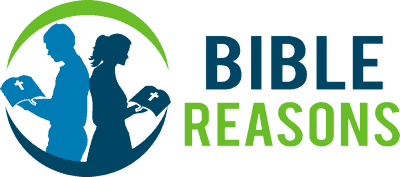In 1971, many Christians who had been struggling through the archaic language of available translations were delighted to find a new translation in relatively modern English – the New American Standard Bible. The, seven years later, another version hit the Christian bookstores – the New International Version. Considered even easier to read, sales shot up, and today the NIV holds first place in Bible book sales. And yet, a significant number of Christians still prefer the NASB to the NIV. We will find out why as we compare these two translations.
Origins
NIV:
The New International Version was birthed out of the National Association of Evangelicals, which formed a committee in 1956 to assess the value of a translation in common American English. The International Bible Society (now Biblica) formed a translation committee in 1967 with 15 Evangelical scholars representing 13 denominations. Their task was a completely new translation, not just a revision of a previous version. Eleven years later, the New International Version was first published in 1978.
NASB:
Published by the Lockman Foundation, the translation of the New American Standard began in the 1950’s. The aim of the 58 evangelical scholar-translators was to be true to the original Hebrew, Aramaic, and Greek, grammatically correct, understandable, and to give Jesus the proper place given to Him by the Word. Although the NASB used the same principles of translation and wording as the 1901 ASV (American Standard Version), it was an original translation from Hebrew, Aramaic, and Greek texts. This was one of the first Bible translations to capitalize personal pronouns related to God (He, Your, etc.).
Readability comparison between the NIV and NASB
NIV
The NIV is often considered the second easiest translation to read, after the New Literal Translation (NLT). It has a reading level of grade 7+ and age 12+.
In 1996, the NIrV (New International Reader’s Version) was published at a 3rd grade reading level, great for younger children and those for whom English is a second language. The NIV and NIrV are commonly used for children’s Bibles.
NASB
The NASB has a reading level of grade 11+ and age 16+, although the last two revisions have made it easier to read. The NASB has some long sentences going on for two or three verses, which makes it difficult to follow the train of thought. Some people find the footnotes distracting, while other people like the clarity they bring.
Bible translation differences
One important decision that Bible translators must make is whether to translate “word for word” (known as formal equivalence) from the Hebrew and Greek manuscripts or to translate “thought for thought,” (known as dynamic equivalence).
Most Bible translations fall somewhere in the spectrum between translating the exact words and phrases from the original languages (Hebrew, Aramaic, and Greek) or conveying the central idea. Dynamic equivalence translations are easier to read, but not as accurate.
Translators also decide whether to use gender-inclusive language, like saying “brothers and sisters” when the original text says “brothers,” but the meaning is clearly both genders. Similarly, translators must consider the use of gender-neutral language, like saying “person” or “one” or “humans” instead of “man” or “men.” In this case, most of the time the Hebrew or Greek word can be translated either way, depending on context.
NIV Bible translation
The NIV is more of a dynamic equivalence (thought for thought) translation, but closer to being a literal translation than the NLT and a couple other translations. It uses both gender-inclusive and gender-neutral language (see the verse comparisons below).
NASB Bible translation
The NASB is considered the most literal modern translation. In places where absolute literalness makes it too difficult to understand, the translators used more current idioms, but with a footnote as to the literal rendering. In the 2020 edition, the NASB incorporated gender-inclusive language when that was the clear meaning of the verse; however, they use italics to indicate words added in (brothers and sisters). The NASB also uses italics to indicate other words added in for clarity (see Colossians 3:1 below). The NASB has copious footnotes with alternative translations of words or explanations of a phrase.
Bible verse comparison
Romans 12:1
NIV: “Therefore, I urge you, brothers and sisters, in view of God’s mercy, to offer your bodies as a living sacrifice, holy and pleasing to God–this is your true and proper worship.”
NASB: “Therefore I urge you, brothers and sisters, by the mercies of God, to present your bodies as a living and holy sacrifice, [a]acceptable to God, which is your [b]spiritual service of worship.”
[a] 1 Or pleasing
[b] 1 I.e., in contrast to offering a literal sacrifice
Psalm 23:1-4
NIV: “The Lord is my shepherd, I lack nothing. He makes me lie down in green pastures, he leads me beside quiet waters, he refreshes my soul. He guides me along the right paths for his name’s sake. Even though I walk through the darkest valley, I will fear no evil, for you are with me; your rod and your staff, they comfort me.”
NASB: “The LORD is my shepherd, I will not be in need. He lets me lie down in green pastures; He leads me beside [a]quiet waters. He restores my soul; He guides me in the [b]paths of righteousness for the sake of His name. Even though I walk through the [c]valley of the shadow of death, I fear no [d]evil, for You are with me; Your rod and Your staff, they comfort me.”
[a] 2 Lit waters of rest
[b] 3 Lit tracks
[c] 4 Or valley of deep darkness
[d] 4 Or harm
Colossians 3:1
NIV: “Since, then, you have been raised with Christ, set your hearts on things above, where Christ is, seated at the right hand of God.”
NASB: “Therefore, if you have been raised with Christ, keep seeking the things that are above, where Christ is, seated at the right hand of God.”
John 8:12
NIV “When Jesus spoke again to the people, he said, “I am the light of the world. Whoever follows me will never walk in darkness, but will have the light of life.”
NASB “Then Jesus again spoke to them, saying, “I am the Light of the world; the one who follows Me will not walk in the darkness, but will have the Light of life.”
Zephaniah 3:17
NIV “The Lord your God is with you, the Mighty Warrior who saves. He will take great delight in you; in his love he will no longer rebuke you, but will rejoice over you with singing.”
NASB “The Lord your God is in your midst, A victorious warrior. He will rejoice over you with joy, He will be quiet in His love, He will rejoice over you with shouts of joy.“
Matthew 5:12
NIV “Rejoice and be glad, for your reward in heaven is great; for in this same way they persecuted the prophets who were before you.”
NASB “Rejoice and be glad, for your reward in heaven is great; for in this same way they persecuted the prophets who were before you.
Psalm 62:8
NIV “Trust in him at all times, you people; pour out your hearts to him, for God is our refuge.”
NASB “Trust in Him at all times, O people; Pour out your heart before Him; God is a refuge for us. Selah.”
Revisions
NIV
- 1984: minor revision.
- 1996: the New International Version Inclusive Language Edition was published in the United Kingdom.
- 1996: the NIrV (New International Reader’s Version) was published at a 3rd-grade reading level.
- 1999: minor revision.
- 2005: Today’s New International Version (TNIV) was published, which contained changes such as saying Mary was “pregnant” rather “with child” (Matthew 1:8), and Jesus saying, “truly I tell you” became “I tell you the truth.” “Miracles” were changed to “signs” or “works.” The TNIV is gender neutral.
- 2011: revision dropped some gender-neutral language of TNIV, reverting to “man” instead of “humans.”
NASB
- 1972, 1973, 1975: minor text revisions
- 1995: major text revisions, called the NASB Updated Edition or NASB95. This version used the latest available manuscripts. Revisions and refinements were made to represent current English usage, for increasing clarity, and for smoother reading. In older editions, the archaic “thy” and “thou” were used in verses speaking to God, and that was changed to “your” and “you.” The NASB was also revised to separations by paragraph rather than each verse separate.
- 2000: major text revisions. Called the NASB 2020, it included “gender accuracy” (replacing “brothers” with “brothers and sisters”). Changed “let us” to “let’s.” In earlier editions, verses or phrases that were not in the earliest manuscripts were bracketed but left in. The NASB 2020 moved these verses down to footnotes.
Target Audience
NIV
The NIV is loved by evangelicals of all ages for its readability, but is especially useful for children, teens, new Christians, those learning the English language, and those desiring to read large portions of Scripture.
NASB
As a more literal translation, it is suitable for s teens and adults interested in serious Bible study, although it can be valuable for daily Bible reading and reading longer passages.
Popularity
NIV
As of April 2021, the NIV is the most popular Bible translation by sales, according to the Evangelical Publisher’s Association.
NASB
The NASB is ranked #10 in sales.
Pros and cons of both
NIV
An important pro for the NIV is its readability. You really want a version that you’re going to enjoy reading and will read regularly.
Some very conservative Evangelical Christians dislike both the NIV and the more recent NASB editions because they don’t use the Textus Receptus as the primary Greek text to translate from. However, most Christians feel that drawing from older manuscripts that are presumably more accurate is a good thing.
Some conservative Christians aren’t comfortable with the more gender-inclusive language of the NIV, which they say this is adding to Scripture.
NASB
Because the NASB is such an accurate and literal translation it can be depended on for serious Bible study.
The 2020 edition made salvation passages (and other passages) gender inclusive where the Hebrew or Greek word could have a gender-neutral meaning. For instance, in 1 Timothy 2:4 the Greek word anthrópos could be translated as either “man” or “person” depending on context. Obviously, 1 Timothy 2:4 is more accurately translated, “who wants all people to be saved” than “all men,” as in the 1995 NASB. (The NIV also translates this “all people.”)
Recent revisions have made the NASB much more readable, but it still does not always follow current idiomatic English and retains some awkward sentence structure.
The NASB divides chapters into sections with topical subtitles. Some readers like this because it helps with understanding the passages as well as finding passages on a certain topic. However, some feel that adding in subtitles may subtly change the meaning of a passage – the decision on what the subtitles are might be based on theological positions or opinions.
Pastors
Pastors who use NIV
- Max Lucado, famous author and co-pastor of Oak Hills Church in San Antonio, Texas
- Jim Cymbala, Pastor, Brooklyn Tabernacle
- Charles Stanley, Pastor Emeritus, First Baptist Church of Atlanta
- Craig Groeshel, Pastor, LifeChurch TV
- Larry Hart, Professor of Theology, Oral Roberts University
- Andy Stanley, Founder, North Point Ministries
- Mark Young, President, Denver Seminary
- Daniel Wallace, Professor of New Testament Studies, Dallas Theological Seminary
Pastors who use NASB
- Dr. Charles Stanley, Pastor, First Baptist Church, Atlanta and president of In Touch Ministries
- Joseph Stowell, President, Moody Bible Institute
- Dr. Paige Patterson, President, Southwestern Baptist Theological Seminary
- Dr. R. Albert Mohler, Jr., President, Southern Baptist Theological Seminary
- Kay Arthur, Co-Founder, Precept Ministries International
- Dr. R.C. Sproul, Presbyterian Church in America Pastor, founder of Ligonier Ministries
Study Bibles to Choose
Some Christians love using a study Bible for the help they give in understanding and applying Bible passages. Most study Bibles have visual aids like maps, charts, illustrations, timelines, and tables.
Best NIV Study Bibles
- The Jesus Bible, NIV Edition, from the Passion Movement, with contributions from Louie Giglio, Max Lucado, John Piper, and Randy Alcorn, features over 300 articles, a dictionary-concordance, and room to journal.
- NIV Biblical Theology Study Bible—edited by several notable scholars including D.A. Carson of Trinity Evangelical Divinity School in Deerfield, Illinois. Contains thousands of verse notes, articles on theology, and lots of color photos, maps and charts.
- The Charles F. Stanley Life Principles Bible (also has a NASB edition) features 2500 life lessons (such as trusting God, obeying God, listening to God) that can be learned from various passages. It also has maps and charts.
Best NASB Study Bible
- The MacArthur Study Bible (also available in NIV), edited by reformed pastor John MacArthur, explains the historical context of passages. It includes thousands of study notes, charts, maps, outlines and articles from Dr. MacArthur, a 125e-page concordance, an overview of theology, and an index to key Bible doctrines.
- The NASB Study Bible by Zondervan Press (also has an NIV edition) contains 20,000+ notes to provide valuable commentary and an extensive concordance. It has a center-column reference system with 100,000+ references. In-text maps help with viewing the geography of the text one is currently reading. An extensive NASB concordance
- The NASB New Inductive Study Bible by Precept Ministries International encourages studying the Bible for yourself instead of relying on the interpretation of commentaries. It guides readers in an inductive method of Bible study, with Bible marking which lead back to the source, allowing God’s Word to be the commentary. Study tools and questions help with understanding and applying Scripture.
Other Bible Translations
- NLT (New Living Translation) as number 3 on the bestselling list, is a translation/revision of the 1971 Living Bible paraphrase and considered the most easily readable translation. It is a “dynamic equivalence” (thought for thought) translation completed by over 90 scholars from many evangelical denominations.
The target audience is young people, children, first time Bible readers, and those wanting to read through the entire Bible.
Here is how Colossians 3:1 is translated – compare it with the NIV and NASB above:
“Therefore, since you have been raised with Christ, strive for the things above, where Christ is seated at the right hand of God.”
- ESV (English Standard Version) as number 4 on the bestselling list is an “essentially literal” or word for word translation and a revision of the 1971 Revised Standard Version (RSV). It is considered second only to the New American Standard Version for accuracy in translating. The ESV is at a 10th grade reading level, and like most literal translations, the sentence structure can be slightly awkward.
The target audience is older teens and adults interested in serious Bible study, yet readable enough for daily Bible reading.
Here is Colossians 3:1 in the ESV:
“If then you have been raised with Christ, seek the things that are above, where Christ is, seated at the right hand of God.”
- NKJV (New King James Version) as number 5 on the bestselling list, is a revision of the King James Version and was first published in 1982. It preserves much of the style and poetic beauty of the KJV, without most of the archaic language. Like the KJV, it mostly uses the Textus Receptus for the New Testament, but translators did consult the older manuscripts and made notes where there are differences. It is much easier to read than the KJV, but not as easy as the NIV or NLT.
Here is Colossians 3:1 in the NKJV:
“If then you were raised with Christ, seek those things which are above, where Christ is, sitting at the right hand of God.”
Which Bible translation shall I choose?
The NASB is reliable in faithfully and accurately representing the original texts. The NIV is readable, reflecting the natural idiom of today’s English and easily comprehended.
When choosing a Bible translation, aim for the version that is most literal and accurate, but which is on your reading level and that you will enjoy reading.
You can do a comparison between the NIV and NASB and other versions at the Bible Hub website. Tools on this website include a page you can pull up for each Bible verse, to see how it is translated in 30+ translations. They also have cross references, multiple commentaries for each verse, and Greek and Hebrew translations.
It’s so important to immerse yourself in God’s Word for spiritual growth and holy living. Find a version you love and jump into His Word!



